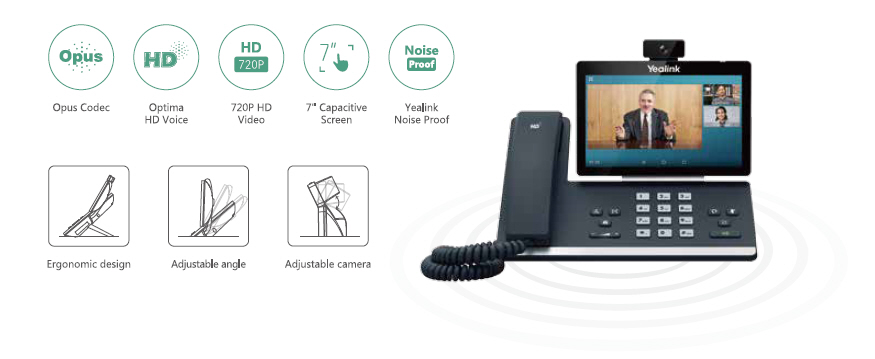Introduction
The digital communication landscape has evolved significantly over the years, and one of the most transformative innovations in this field is Voice over Internet Protocol (VoIP) phone service. This technology allows people to make voice calls using an internet connection instead of traditional analog phone lines. While convenience and cost savings are often highlighted as key benefits, another crucial aspect that deserves attention is call quality. In this article, we will delve into how Quality of Service (QoS) settings can enhance call quality for VoIP phone services.
What Is VoIP Phone Service?
VoIP phone service enables users to make voice calls via the internet rather than through conventional telephone lines. But what does that mean for your everyday communication needs?
How Does VoIP Work?
VoIP technology converts voice signals into data packets, which are then transmitted over the internet. These packets are reassembled at their destination, allowing for real-time conversations. The process involves several steps:
Signal Conversion: Your voice is converted into digital data. Packetization: This data is broken down into smaller packets for transmission. Transmission: The packets travel across the internet to their destination. Reassembly: Once received, the data packets are reassembled back into audio.Types of VoIP Services
- Residential VoIP: Ideal for home users looking to reduce phone bills. Business VoIP: Tailored solutions that cater to organizational communication needs. Mobile VoIP: Allows calls using smartphones or tablets via Wi-Fi or cellular data.
Benefits of Using VoIP Phone Service
VoIP offers numerous advantages over traditional telephony:
Cost Savings
One of the most compelling reasons to switch to VoIP is cost savings. With lower long-distance rates and no need for separate telephone lines, users can save significantly on their monthly bills.
Flexibility and Scalability
VoIP systems are easily scalable; adding new lines or features can often be done with minimal hassle compared to traditional systems.


Advanced Features
Many VoIP providers include advanced features such as voicemail-to-email transcription, call forwarding, and video conferencing at no extra charge.
Understanding Quality of Service (QoS)
Quality of Service (QoS) refers to a set of techniques used in networking to manage bandwidth and prioritize certain types of traffic—like voice calls—to ensure optimal performance.
Why QoS Matters in VoIP Phone Service?
In a world where internet speeds can fluctuate dramatically due to bandwidth-heavy applications like streaming video or online gaming, ensuring a clear and uninterrupted voice call becomes critical. QoS plays a vital role in managing network resources effectively.
Key Metrics in QoS Management
Latency: The time it takes for a packet of data to travel from sender to receiver. Jitter: Variability in packet arrival times; high jitter can lead to choppy audio. Packet Loss: Occurs when packets fail to reach their destination; even minor losses can degrade call quality.VoIP Phone Service: Enhancing Call Quality with QoS Settings
To maximize the effectiveness of your VoIP phone service, implementing QoS settings is essential. Here’s how you can enhance call quality through effective QoS management:
Prioritize Voice Traffic
By configuring your network devices (routers/switches) to prioritize voice traffic over other types (like file downloads), you ensure that calls receive the necessary bandwidth they require for clarity and reliability.
Bandwidth Reservation
Allocating a specific amount of bandwidth exclusively for voice traffic helps prevent congestion during peak usage times.
Monitoring Tools
Utilizing monitoring tools allows you to keep an eye on latency, jitter, and packet loss metrics actively so that you can make adjustments quickly if any issues arise.
Implementing QoS Settings for Your VoIP System
Here’s a structured approach you can take:
1. Assess Your Current Network
Before making changes, it’s essential first to understand your current network setup and identify any potential bottlenecks affecting call quality.
- Conduct Speed Tests
Run speed tests at different times throughout the day. This will give you insights into your average upload and download speeds as well as latency levels.
- Identify Bandwidth Usage
Use network monitoring tools like PRTG or SolarWinds Network Performance Monitor to identify what applications consume the most bandwidth during peak hours.
2. Configure Router Settings
After assessing your current network status, it’s time to configure your router settings:
- Enable QoS Feature
Most modern routers have built-in QoS capabilities; enabling this feature will allow you to prioritize traffic accordingly.
- Create Rules for Voice Traffic
Set rules within your router's interface delineating how much bandwidth should be allocated specifically for your VoIP service versus general web browsing or streaming services.
3. Test Call Quality Post-Configuration
Once you've made changes, it’s essential to test whether these adjustments have positively impacted call quality:
- Make Sample Calls
Conduct test calls internally before rolling out changes organization-wide; listen closely for any signs of latency or distortion during conversations.
- Gather Feedback from Users
Encourage staff members using the system regularly provide feedback on call clarity after implementing new settings—this information will be invaluable in fine-tuning further adjustments if necessary!
Troubleshooting Common Issues with VoIP Phone Services
Despite taking all precautions, issues may still arise with your service—here’s how you can troubleshoot effectively:
1. Poor Call Quality
If you're experiencing poor sound quality despite following best practices previously mentioned:
- Check Internet Speed Inspect Hardware (Routers/Phones) Review Configuration Settings Confirm No Other Applications Are Running Concurrently That May Affect Bandwidth Usage
2. Dropped Calls
Dropped calls can occur due primarily due congestion or poor connectivity—here's what you should do:
- Ensure Sufficient Bandwidth Is Allocated Examine Network Stability Switch To Wired Connection If Possible
3. Echo On Calls
Echoing sounds during conversations may stem from microphone sensitivity issues—try adjusting microphone settings on your device accordingly!
FAQs about VoIP Phone Services
What is the difference between traditional phones and VoIP?
Traditional phones use circuit-switched networks while VoIP uses packet-switched networks via internet connections leading usually towards greater flexibility & cost-effectiveness among other benefits!
Do I need specialized hardware for my VoIP service?
While most devices like computers/laptops/smartphones come equipped now days capable enough handle basic functions some may find dedicated IP phones more efficient depending on usage frequency/professional environment requirements etc!
Can I keep my existing phone number with a new VoIP service?
Yes! Most providers offer number porting options allowing seamless transition without having change numbers altogether which would cause inconvenience among contacts etc!
How secure is my communication through a VoIP system?
Security largely depends upon encryption standards used by provider however utilizing VPNs alongside reliable systems provides added layers protection against potential vulnerabilities present within networks themselves!

li22/ol3/# How do I choose between various providers available today? Research reviews comparing pricing plans offered alongside features tailored towards specific needs whether residential/business-oriented ensuring finding best fit possible based upon individual circumstances/preferences involved!
Conclusion
In conclusion, adopting a robust VoIP phone service brings numerous benefits ranging from cost savings all way improving overall functionality enjoyed daily by users alike! However achieving optimal performance hinges significantly upon implementing effective Quality Of Service (QoS) settings tailored appropriately meeting unique demands VoIP Phone Service Los Angeles while navigating limitations imposed inherently by technology itself! By following best practices outlined above one could confidently enhance their experience maximizing value derived from such investments ultimately benefiting both individuals/orgs alike moving forward!